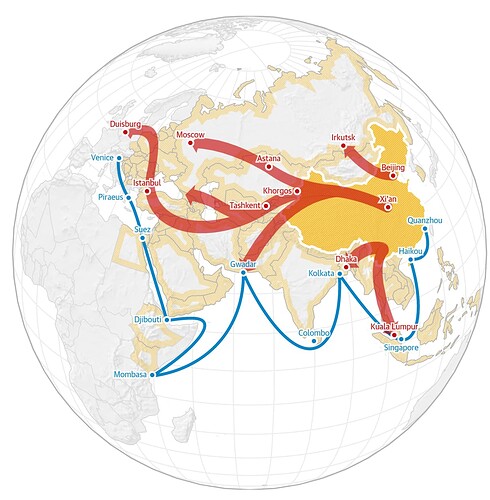Initiative?
The project is often described as a 21st century silk road, made up of a “belt” of overland corridors and a maritime “road” of shipping lanes. China is carrying out or planning construction projects in more than 60 countries along these routes.
Cities are supported by
Beijing’s multibillion dollar Belt and Road Initiative (BRI) has been called a Chinese Marshall Plan, a state-backed campaign for global dominance, a stimulus package for a slowing economy, and a massive marketing campaign for something that was already happening – Chinese investment around the world.
Over the five years since President Xi Jinping announced his grand plan to connect Asia, Africa and Europe, the initiative has morphed into a broad catchphrase to describe almost all aspects of Chinese engagement abroad.
Belt and Road, or yi dai yi lu, is a “21st century silk road,” confusingly made up of a “belt” of overland corridors and a maritime “road” of shipping lanes.
From South-east Asia to Eastern Europe and Africa, Belt and Road includes 71 countries that account for half the world’s population and a quarter of global GDP.
Everything from a Trump-affiliated theme park in Indonesia to a jazz camp in Chongqing have been branded Belt and Road. Countries from Panama to Madagascar, South Africa to New Zealand, have officially pledged support.
How much money is being spent?
The Belt and Road Initiative is expected to cost more than $1tn (£760bn), although there are differing estimates as to how much money has been spent to date. According to one analysis, China has invested more than $210bn, the majority in Asia.
But China’s efforts abroad don’t stop there. Belt and Road also means that Chinese firms are engaging in construction work across the globe on an unparalleled scale.
China’s Interest on The Rock (Albert Isola & Joe Bossano pull the trojan dragon through the gates)
